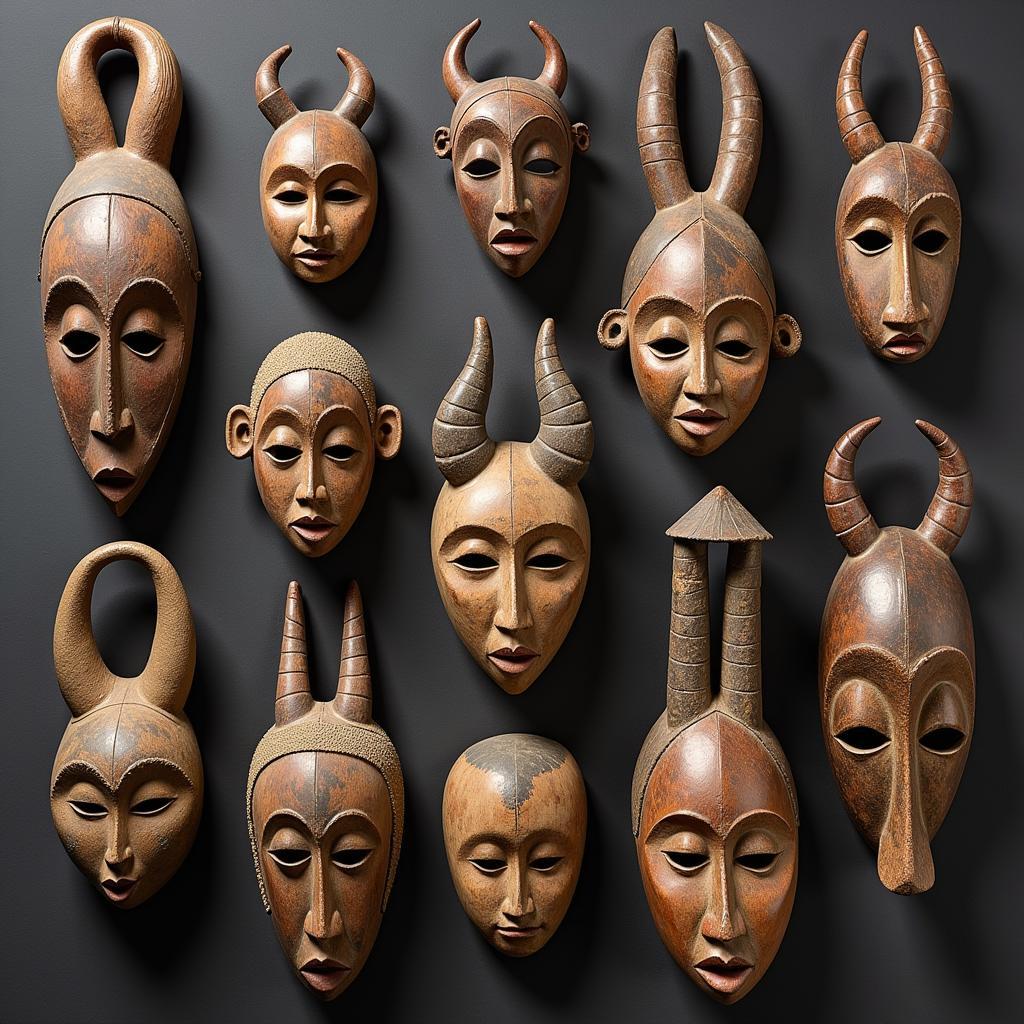Unveiling the Stories: African Cultural Artifacts
African Cultural Artifacts offer a captivating glimpse into the continent’s rich history, diverse cultures, and artistic brilliance. More than just objects, these artifacts serve as tangible links to the past, whispering tales of ancient civilizations, spiritual beliefs, and societal norms.
Deciphering the Significance of African Cultural Artifacts
African cultural artifacts encompass a wide array of objects, each imbued with deep meaning and purpose. From intricately carved masks and sculptures to finely woven textiles and beaded jewelry, these artifacts offer insights into various aspects of African Life:
- Spiritual Beliefs: Many artifacts, like masks and statues, played a central role in religious ceremonies, embodying deities or ancestral spirits.
- Social Structures: Objects like staffs, stools, and headdresses often signified social status, leadership roles, or lineage within a community.
- Daily Life: Utilitarian items, such as pottery, tools, and musical instruments, provide a window into the everyday lives and resourcefulness of African people.
Exploring Different Types of African Cultural Artifacts
The diversity of African cultures is mirrored in the vast array of artifacts they produced. Let’s explore some prominent categories:
1. Masks: More Than Meets the Eye
African masks are among the most recognizable and celebrated art forms globally. Used in rituals, dances, and ceremonies, these masks often represent spirits, ancestors, or mythological figures.
- Example: The Baule people of Côte d’Ivoire are renowned for their intricately carved masks depicting ideals of beauty and morality.
2. Textiles: Weaving Stories into Fabric
African textiles are known for their vibrant colors, intricate patterns, and symbolic meanings. Kente cloth from Ghana, for example, often features geometric designs that represent proverbs, historical events, or social status.
- Example: The Kuba people of the Democratic Republic of Congo are celebrated for their raffia textiles, which incorporate complex geometric patterns and often depict scenes from daily life or mythology.
3. Sculptures: Giving Form to Beliefs
African sculptures range from small, personal objects to large-scale installations. They often depict human figures, animals, or abstract concepts and are crafted from materials like wood, bronze, or ivory.
- Example: The Yoruba people of Nigeria are renowned for their bronze sculptures, particularly those depicting their pantheon of deities or “Orishas.”
4. Beadwork: Tiny Beads, Profound Meanings
Beadwork holds cultural significance across Africa. Intricately beaded necklaces, bracelets, and garments often serve as markers of identity, social status, or spiritual beliefs.
- Example: Among the Maasai people of Kenya and Tanzania, beaded jewelry plays a crucial role in their cultural identity, with different colors and patterns carrying specific meanings.
5. Musical Instruments: The Sound of Heritage
Music and dance are integral to many African cultures. Instruments like the djembe drum, kora (harp-lute), and mbira (thumb piano) produce distinctive sounds that accompany rituals, celebrations, and storytelling.
- Example: The music of the Mande people of West Africa, often featuring the kora, is renowned for its complex melodies, improvisational nature, and connection to oral traditions.
Preserving and Appreciating African Cultural Heritage
African cultural artifacts are facing threats from looting, illicit trafficking, and the passage of time. Museums and cultural institutions worldwide play a crucial role in preserving these treasures for future generations. By learning about and appreciating these artifacts, we gain a deeper understanding of the richness and diversity of African cultures.
